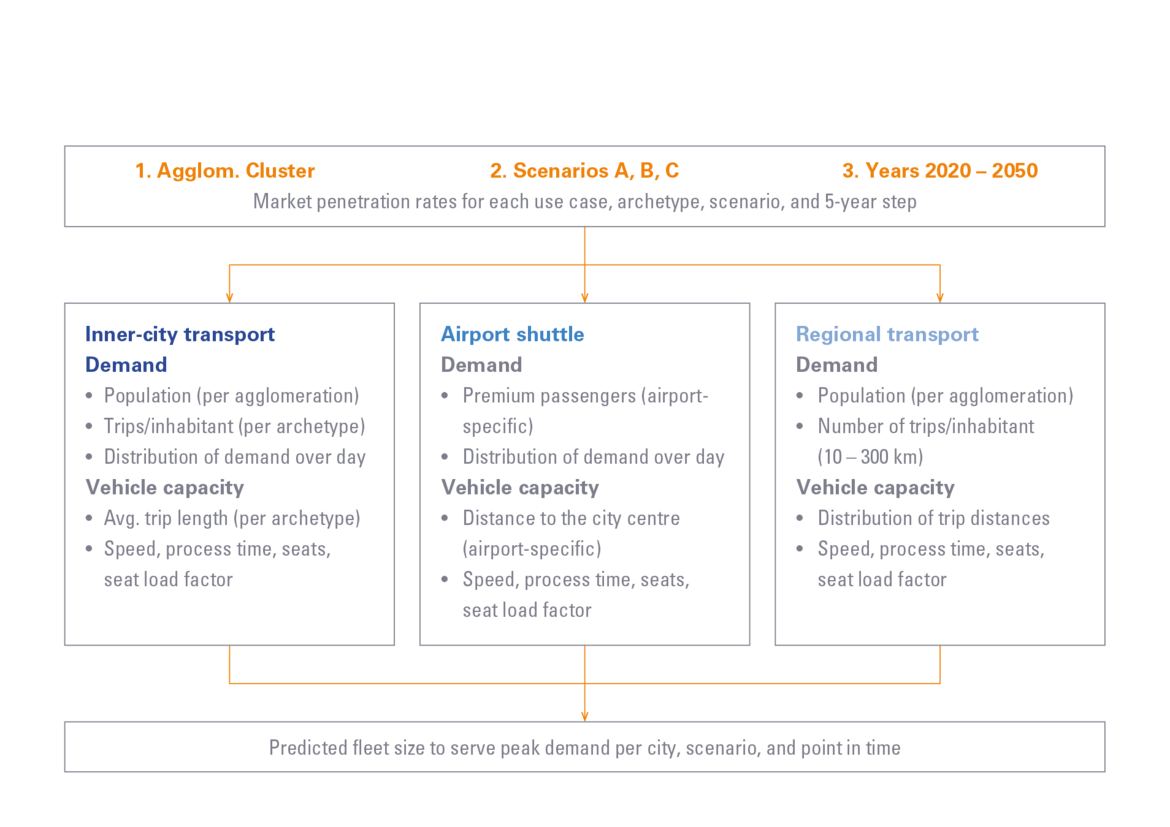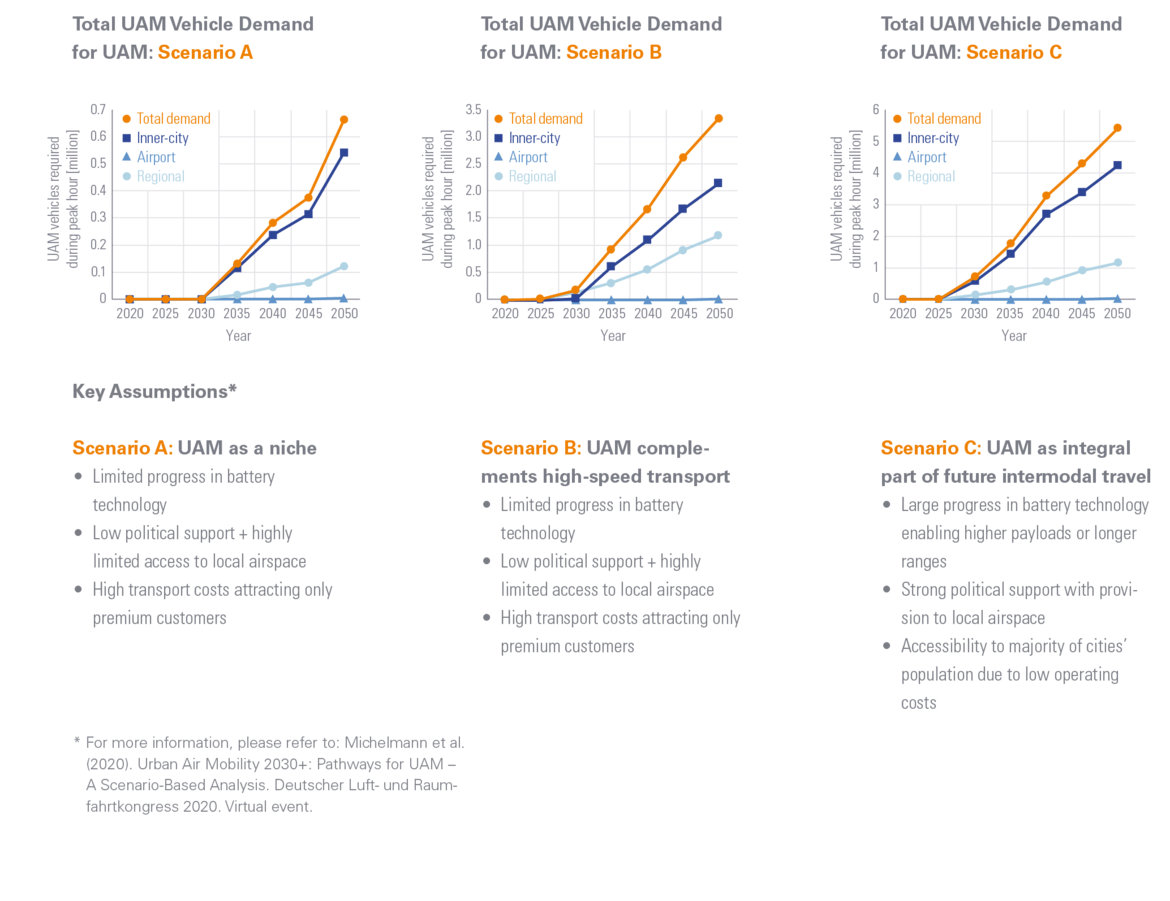Rapid technological progress allows the development of vertical take-off and landing aircraft, which in the future could make it possible to bring air mobility to urban areas. Urban air mobility (UAM) covers a wide range of use cases, such as connecting commercial airports to city centres, but also innercity and regional transport of up to 300 km.

To assess the implications of UAM on the supplier market, the global market for UAM vehicles was estimated. The assumed market penetration rates of UAM differed for the three use cases mentioned above, six city archetypes, and three scenarios. The global market was then projected for the timeframe 2020 to 2050. The length and total number of trips that could potentially be replaced by UAM and their distribution throughout the day vary by use case and city archetype. Using existing mobility data allows us to quantitatively estimate demand trends and validate them against figures from existing studies.
The calculations show that, depending on the scenario, a global demand of up to 5.5 million UAM vehicles is possible by 2050. However, the results also show how important it is to take a scenario-based perspective on this market, which is strongly characterised by uncertainties, as the development of environmental factors can strongly influence overall demand. However, should UAM become a reality, vehicle unit numbers can be expected to be far above the previous figures for the aviation sector.



